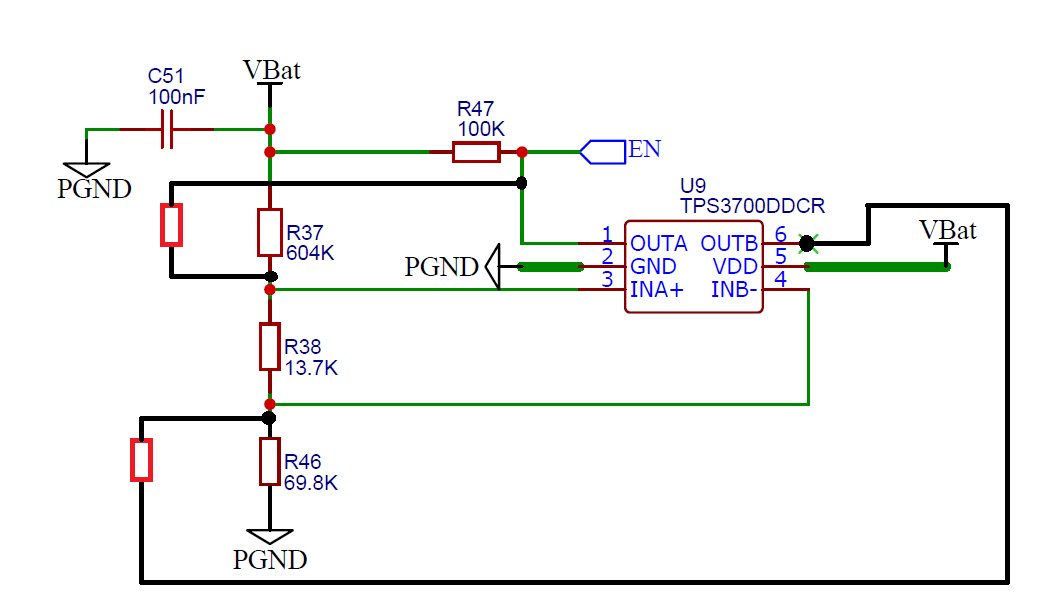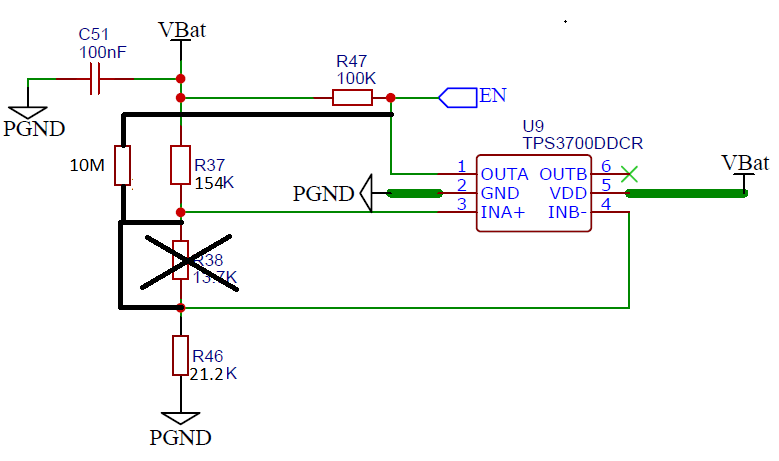Other Parts Discussed in Thread: TPS3700, TPS61030, BQ24650
Hello,
I was looking at the feasibility of adding a larger hysteresis to the suggested design found in the TPS3700EVM-114 with a gap of 0.1 V and how I would be able to do that with the schematic given below:
Schematic_New Project_2020-12-15_10-55-20.pdf
What should I change if I wanted to have my low voltage cutoff to be at 3.2 V and allow the ceiling of my hysteresis be at 3.3 V?? I have already taken a look at the guides posted by texas instruments online and I just was not sure how I would implement that in schematic above.
Thanks,
Abe





